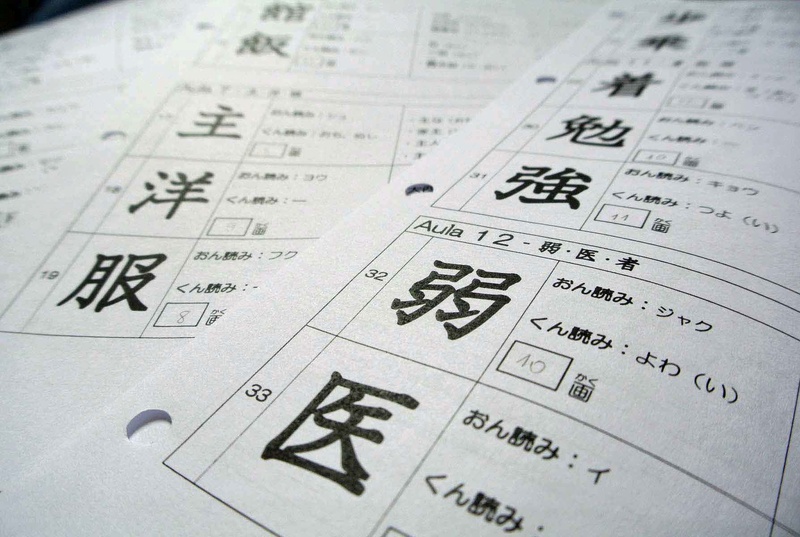Brazil has the largest community of descendants outside of Japan. Today there are approximately 1 million and 600 thousand descendants of Japanese, with a greater concentration in the states of São Paulo, Paraná, Mato Grosso do Sul and Pará. In terms of teaching the Japanese language , started with immigrants, there are more than 300 schools and around 20 thousand students in the country.
Teaching in Brazil: culture, identity and values
According to research data carried out in 2012 by the Japan Foundation – an organization linked to the Japanese Ministry of Foreign Affairs –, there are 325 Japanese language schools in Brazil, including higher education institutions. Much of it is in São Paulo and Paraná, where the majority of Japanese-Brazilians live.
Furthermore, 106 schools are associated with the Brazilian Center for Japanese Language (CBLJ), a non-profit entity whose objectives are to contribute to the training of teachers and students, and to spread the Japanese language. The CBLJ estimates that approximately one thousand teachers teach the Japanese language, among whom 85% are Nikkei .
Outside Japan, 3.98 million people study the Japanese language, according to 2012 information from the Japan Foundation. In Brazil, the total is 19,913 students. According to the CBLJ, descendants are the majority, however, recently there has been an increase in the number of non- Nikkei Brazilians who learn the language, interested in Japanese culture, having contact mainly through manga (Japanese-style comics) or other forms of art and culture. In most schools, Nikkei students predominate, however, some have 20, 30, 50 or even 100% non-descendant students, mainly in northeastern Brazil.
The proportion of students in relation to the total Nikkei population is very low. This means, indirectly, that thousands of third, fourth and fifth generation Japanese-Brazilians are unfortunately not studying the Japanese language and, therefore, have no contact with the mother tongue of their grandparents, great-grandparents and great-great-grandparents.
For Yuho Morokawa, writer and vice-president of CBLJ, the result of this is the gradual loss of identity – and the positive image spread in Brazilian society by the first immigrants –, especially with the rapid miscegenation observed in the country. Furthermore, values such as honesty, dedication and effort (in work and study), respect for nature, cooperation, perseverance, responsibility, among others, are being lost. But those who study the Japanese language still assimilate and preserve – in part – the legacy of their ancestors.
Certification for non-natives
The Noryoku Shiken (Japanese-Language Proficency Test – JLPT) is administered by the Japan Foundation in partnership with the Brazilian Center for Japanese Language. Publicity and registration begin between July and August, and the exam takes place at the beginning of December.
In 2014, the test was administered in 213 cities in 66 countries outside Japan, totaling 449,464 participants – around 4,000 Japanese language students from all over Brazil, according to data from the CBLJ. The JLPT assesses and certifies Japanese language proficiency for non-native speakers. The current level classification was implemented in 2010, with the inclusion of N3, and today is divided from N1 to N5 (more advanced and more basic).
To give you an idea, the Noryoku Shiken certification is a reference not only in Japan, but in Brazil as well. In the case of Japan, level N1 is a requirement for entry into courses at some universities. A certificate of this same level is also required from a foreigner who is a healthcare professional and intends to work in the country. In Brazil, there are some Japanese companies that may require the certificate as proof of the Japanese level of candidates who wish to apply for a job.
The importance of the Japanese language
It is true that teaching the Japanese language is fundamental to preserving culture, values and identity. Therefore, it is also important in the formation of the individual as a good citizen.
Furthermore, the language is essential in the cultural and economic exchange between Brazil and Japan, which should grow much more with the advancement of new communication and information technologies, according to Yuho Morokawa, vice-president director of the Brazilian Center for the Japanese Language.
The writer observes a premise that applies to the language and history of any country. Morokawa says that, according to scholars, there are six great ancient civilizations in the world, among which the Japanese one is the most peculiar, due to its formation, created over thousands of years, isolated from the rest of the world.
To know or understand each civilization, it is extremely important to know their language in order to assimilate their culture and true feelings. In this case, it is essential to know the Japanese language, especially the writing of kanji (ideogram) which in the letter itself has different meanings and, therefore, sometimes becomes difficult to interpret in Portuguese.
Therefore, learning the Japanese language is an important step towards better understanding the culture and history of our families' country of origin.
© 2016 Tatiana Maebuchi






